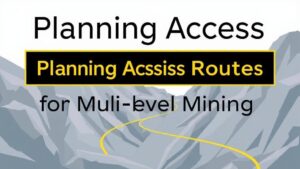How to Set Up a Portable Prospecting Lab for Mineral Testing
How to Set Up a Portable Prospecting Lab for Mineral Testing
Setting up a portable prospecting lab for mineral testing is essential for geologists, prospectors, and researchers who need to conduct mineral analyses in the field. A well-equipped portable lab allows for quick decisions and reduces the need for time-consuming trips back to stationary laboratories. This article outlines the foundational steps to establish an efficient and effective portable lab, focusing on key equipment, setup processes, and practical considerations.
1. Understanding the Purpose of a Portable Prospecting Lab
The primary goal of a portable prospecting lab is to facilitate immediate mineral testing and analysis in various environments. Key advantages include:
- Field Efficiency: Enables real-time analysis, which can enhance decision-making regarding mineral exploration.
- Cost-Effectiveness: Reduces travel and transportation costs associated with sample shipment to distant laboratories.
- Versatility: Capable of performing multiple tests depending on the equipment chosen and the minerals being analyzed.
2. Essential Equipment for Portable Labs
When setting up a portable lab, the selection of equipment is crucial. following items are commonly included:
- Field Portable X-Ray Fluorescence (XRF) Analyzer: A key tool for the qualitative and quantitative analysis of minerals, allowing for fast, non-destructive testing.
- Portable Spectrometers: Useful for characterizing mineral compositions using infrared or Raman spectroscopy.
- Microscopes: A lightweight field microscope is invaluable for examining mineralogical details.
- Sample Collection Tools: Equipment such as rock hammers, hand trowels, and sample bags for collecting and storing specimens.
- Digital Scale: For weighing samples accurately, which is crucial for certain types of analyses.
- Field Notebook and GPS Device: Essential for recording data and location details of samples.
3. Setting Up the Lab
After gathering the necessary equipment, the next step is establishing the lab setup. Follow these guidelines for an efficient workspace:
- Choose the Right Location: Select a stable surface outside, away from potential hazards, and with adequate lighting.
- Organize Your Equipment: Arrange tools logically, keeping frequently used items accessible. A portable table or workstation can enhance organization.
- Power Supply Considerations: For instruments requiring electricity, consider portable solar chargers or batteries for uninterrupted power.
4. Safety Precautions
Safety should always be a priority during mineral testing in the field. The following measures are recommended:
- Wear Protective Gear: Safety goggles, gloves, and appropriate clothing should be worn to prevent injuries.
- Proper Handling of Chemicals: If utilizing chemical tests, ensure that all reagents are labeled and stored securely to avoid spills or accidental exposure.
- Emergency Preparedness: Keep a well-stocked first aid kit on-site and be familiar with procedures for dealing with potential accidents.
5. Real-World Applications
A portable prospecting lab can be applied in various scenarios, such as:
- Mining Operations: Miners use portable labs to assess gold, silver, and other valuable mineral concentrations directly at the excavation site.
- Environmental Studies: Environmental scientists utilize portable labs to analyze soil and water samples for contaminant presence in real-time.
6. Case Study: The Success of Portable Labs
In a recent project in the Appalachian region, geologists equipped with portable XRF analyzers were able to map mineral deposits with remarkable efficiency. They conducted on-site testing to understand the distribution of zinc and lead in rock formations, successfully identifying high-potential extraction sites without delays associated with sending samples to the lab. This led to more informed and timely strategic decisions, resulting in a 30% increase in mining efficiency within the first year.
7. Actionable Takeaways
Setting up a portable prospecting lab can significantly enhance mineral testing capabilities in the field. To effectively implement a portable lab:
- Invest in essential portable analytical equipment tailored to your testing needs.
- Prioritize safety and organization to ensure an efficient working environment.
- Explore the effectiveness of your setup through real-world applications and learn from successful case studies.
With the right preparation and equipment, a portable prospecting lab transforms how mineral analysis is conducted, empowering professionals to make informed decisions on-site.


